You’d rather be cooking your own food in your own kitchen, but somehow you’ve ended up at a public eatery. It’s inevitable, you’ll find yourself at a restaurant sooner or later.
If you’re trying to stay healthy, this might be a bit overwhelming at first. There are so many options, most of which look delicious and appetizing. But you know that many of them could ruin all of the work you’ve put into your carefully managed diet.
I’m here to tell you that they don’t have to be so bad. It’s true – there are ways of dining out without coming out of it worse off than you were before.
So here are 20 ways for you to stay healthy while dining out.
Have a Healthy Snack Beforehand
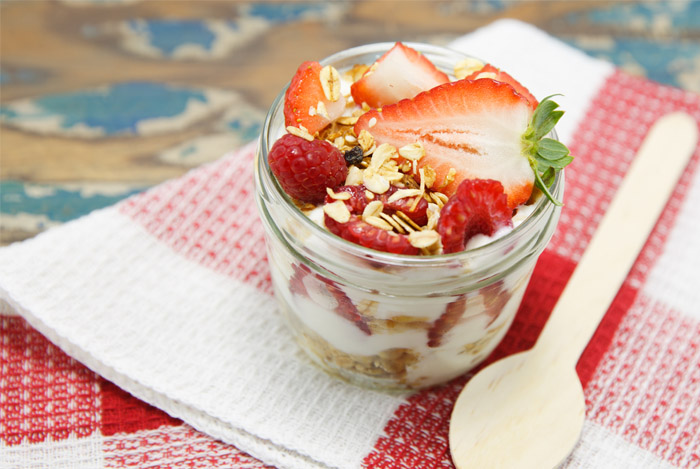 If you know you’re going to a restaurant for dinner, you may think the smart thing to do is to starve yourself all day so you can really go to town on a huge meal.
If you know you’re going to a restaurant for dinner, you may think the smart thing to do is to starve yourself all day so you can really go to town on a huge meal.
Don’t do that.
Instead, eat regularly throughout the day. And, before you go to the restaurant, find something light and healthy, like a piece of fruit, a small bowl of yogurt, or even a small salad. That way, you won’t be tempted to order the most massive, unhealthy item on the menu.
Look Up the Menu Online
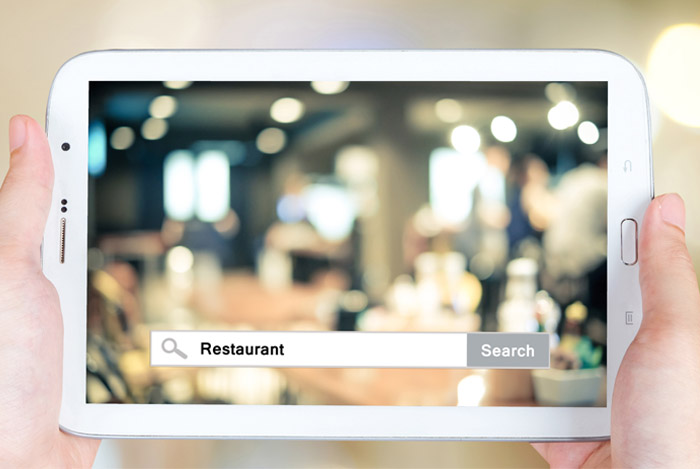 Instead of facing the anxiety of racing the clock, hoping you find the right food to order before the waiter comes back, check the menu out in advance!
Instead of facing the anxiety of racing the clock, hoping you find the right food to order before the waiter comes back, check the menu out in advance!
This way, you’ll already know what foods are the healthiest on the menu without having to tell the waiter you need more time to choose. You’ll also know more details about the foods themselves, like how they’re prepared and what all goes into them, helping you potentially avoid an unhealthy mistake.
You might even be able to impress your fellow diners with your knowledge and help them to make better choices when they order.
Order Water Instead
 When you go out to eat, there are practically limitless options of drinks available, ranging from sugary sodas to carb-heavy beers. But, do you really need them?
When you go out to eat, there are practically limitless options of drinks available, ranging from sugary sodas to carb-heavy beers. But, do you really need them?
I don’t think so. You can order water instead, and drink it throughout your meal.
Not only will this help you to stay hydrated throughout, drinking water actually aids in digestion, helping your body to better absorb the nutrients in your food. It also can offset the effects of eating high-sodium foods, something plaguing many restaurant options.
Choose the Salad
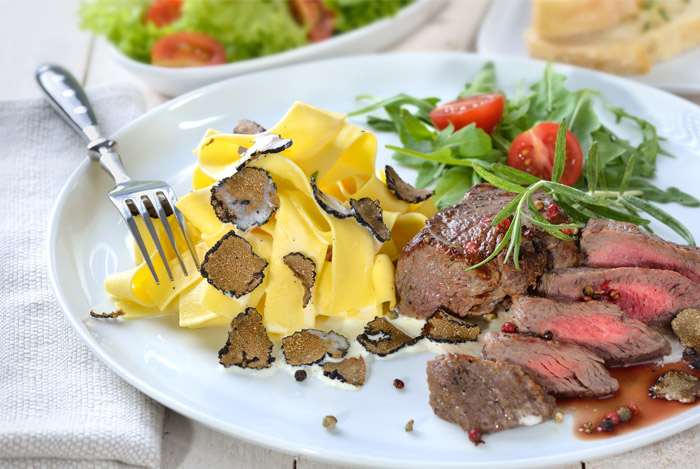 If a meal comes with an optional salad, always say yes. Especially if the main course is light on veggies.
If a meal comes with an optional salad, always say yes. Especially if the main course is light on veggies.
If you’re considering an appetizer beforehand, don’t go for the cheese sticks or the nacho platter – choose the salad, and make your meal a more well-rounded eating experience.
According to research from Pennsylvania State University, ordering the salad will also temper your appetite, so you won’t go all out on the main course, keeping your overall calorie intake low.
Avoid Salad Extras
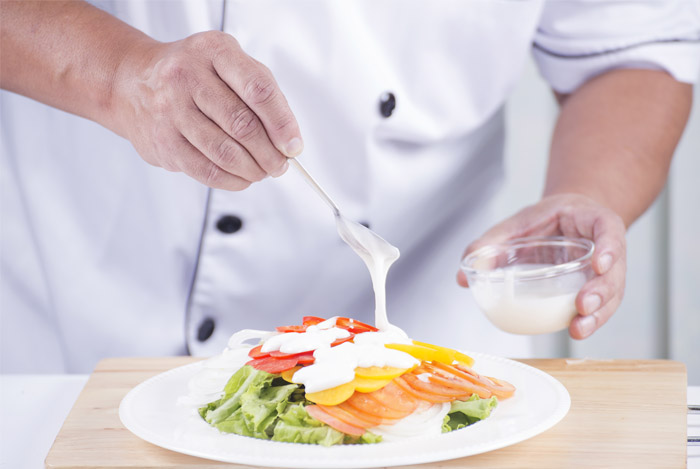 Salads can be topped with all sorts of extras, and the calories add up pretty quickly if you aren’t careful.
Salads can be topped with all sorts of extras, and the calories add up pretty quickly if you aren’t careful.
So say no to the bacon bits, fried noodles, creamy dressings, croutons, and cheese. And most importantly, don’t coat it in dressing. Instead, load up on the raw vegetables, and even add on some fruit or chopped nuts.
A salad should not be a fatty, unhealthy addition to your meal. It should be light, appetizing, and nutritious. Keep it that way!
Say No to Bread Baskets and Chips
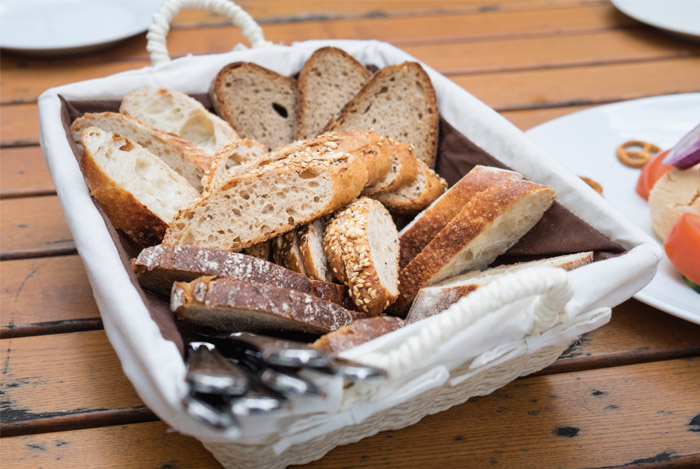 A lot of restaurants these days offer unlimited bread sticks or bowl after bowl of chip refills. While this might be a great business model for the restaurant, enticing hungry customers to fill up on cheap sides, it’s a terrible idea for your health.
A lot of restaurants these days offer unlimited bread sticks or bowl after bowl of chip refills. While this might be a great business model for the restaurant, enticing hungry customers to fill up on cheap sides, it’s a terrible idea for your health.
The calories can really add up when you sit there stuffing your face with bread or chips waiting for your food to come along. And when they say unlimited, they usually mean it. Before you know it, you’ll have consumed a meal’s worth of calories (along with whatever salty salsa or fatty dipping sauces they include) before ever getting to your entrée.
If they place the basket or bowl in front of you and you think you’ll be tempted, ask them to take it away. If you have the willpower, exercise control over your stomach!
Look for the Light Options
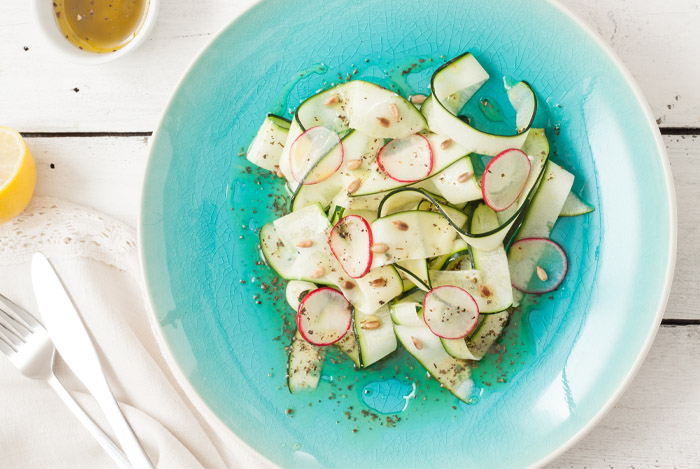 Most popular restaurants these days offer lighter fare, usually in a section toward the back end of the menu. While these may not be as alluring as the gigantic steak or pasta platters, they’ll likely contain hundreds of fewer calories than those other options.
Most popular restaurants these days offer lighter fare, usually in a section toward the back end of the menu. While these may not be as alluring as the gigantic steak or pasta platters, they’ll likely contain hundreds of fewer calories than those other options.
The light options also usually conveniently include their total calorie count, while the more popular items on the menu aren’t as likely to.
While these are probably added as a way of appeasing the more finicky, cautious eaters, they’re a great way to avoid feeling guilty after eating a meal. They help people who are on diets eat at the same restaurants as their not-so-cautious friends.
Be Wary of Seductive Menu Descriptions
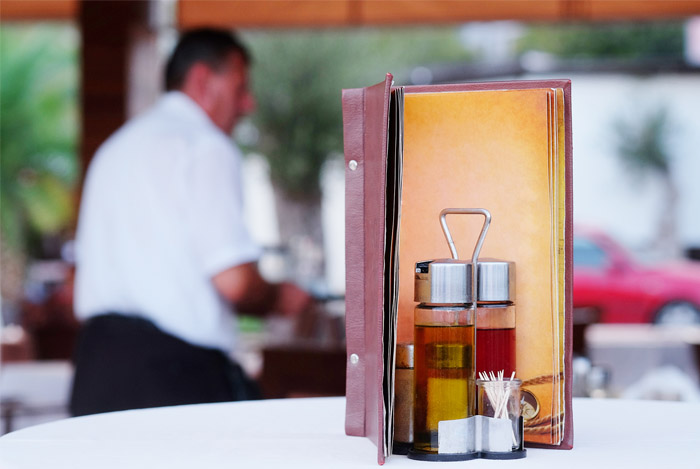 Restaurant menus are always trying to sell you on particular menu items. When you look at the light options, it may claim they’re tasty and healthy, but they don’t really push as hard to sell those as they do their more popular items.
Restaurant menus are always trying to sell you on particular menu items. When you look at the light options, it may claim they’re tasty and healthy, but they don’t really push as hard to sell those as they do their more popular items.
Don’t be fooled. Advertisers are well trained when it comes to steering you to make the wrong decision!
Just because the menu goes into great detail about how wonderful, perfect, and satisfying something on the menu is, you can still choose one you know will be better for your health.
Try Fish Instead
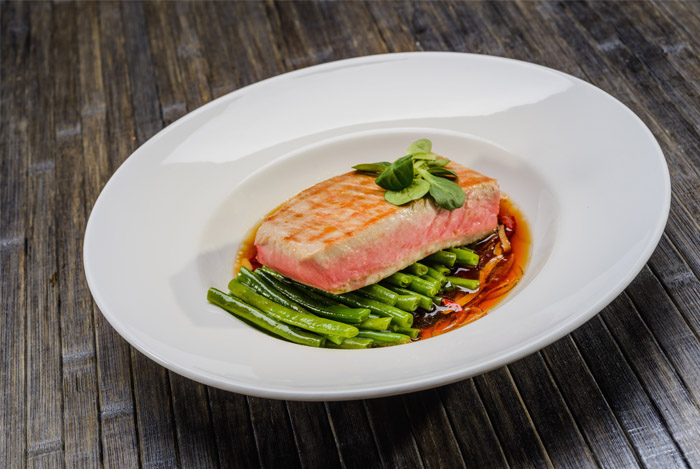 If a restaurant has fish available, you’d be wise to choose it over your other protein options.
If a restaurant has fish available, you’d be wise to choose it over your other protein options.
Fish is full of healthy essential nutrients that are hard to find elsewhere. Even the fattiest fish are great for you because of their generous helpings of omega-3 fatty acids.
Fish is typically lower in calories than chicken, about equal in proteins, and has far fewer of the omega-6 fatty acids that are known to be worse for you. And fish is delicious too. It’s a wonder why so few Americans eat fish as a regular part of their diet.
Eat Slowly
 You may be one of those people who loves your food so much that you can’t wait to eat it all as fast as you can. While this might seem charming if you aren’t spilling it all over yourself or generally making people around you uncomfortable, you’re actually doing yourself a disservice.
You may be one of those people who loves your food so much that you can’t wait to eat it all as fast as you can. While this might seem charming if you aren’t spilling it all over yourself or generally making people around you uncomfortable, you’re actually doing yourself a disservice.
It takes the brain almost a full twenty minutes on average to recognize that you’re full. This means you can keep shoveling food into your mouth without realizing that your body doesn’t want any more.
If you eat slowly, you can chew your food more efficiently (helping in digestion), savor the flavor, and allow your brain to catch up with your mouth.
Consider Making the Appetizer the Meal
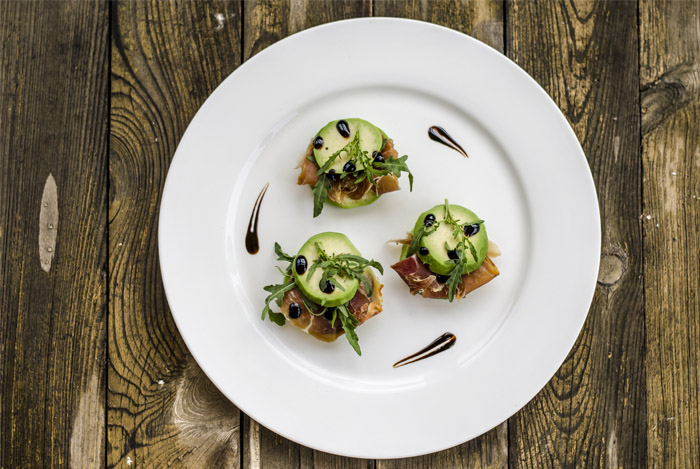 Sometimes, those appetizers are pretty huge.
Sometimes, those appetizers are pretty huge.
While they’re usually cheaper and smaller portioned than the entrees, leading you to believe you should be ordering your main course from elsewhere on the menu, they can actually be the healthier option.
If you’re worried you won’t feel full after eating only an appetizer, order a salad along with it. Altogether, you’ll spend less money, and likely consume fewer calories. Because there might be less on the plate, you can eat it slower, and feel fuller for it.
Order Before Everyone Else
 If you wait until everyone else orders to make your selection, you may feel like your initial choice is more boring than theirs. In order to match or top them, you might forget about your diet and get something similar to what they’re getting.
If you wait until everyone else orders to make your selection, you may feel like your initial choice is more boring than theirs. In order to match or top them, you might forget about your diet and get something similar to what they’re getting.
Don’t fall for this psychological trap! When the waiter comes to the table, speak up. Make eye contact.
Or, if you have to, tell your friends why you’re ordering first. Tell them you don’t want to let their choices affect yours. Your health is more important than your ego.
Keep it Simple
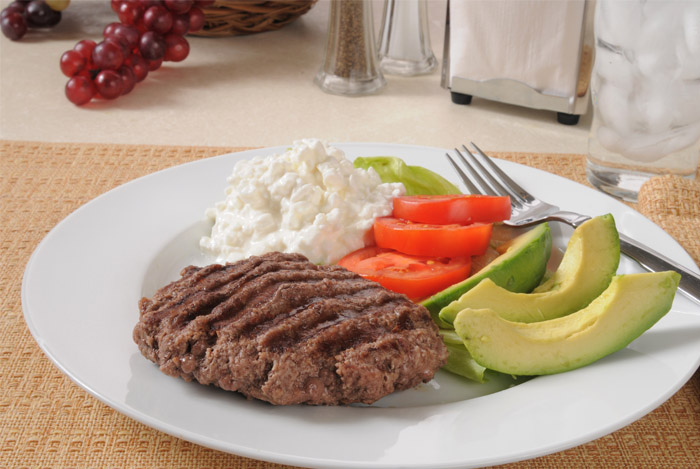 When ordering a meal, don’t go all out on toppings or sides. Stick with the simplest form of the meal. If you can cut something out of it completely, do so.
When ordering a meal, don’t go all out on toppings or sides. Stick with the simplest form of the meal. If you can cut something out of it completely, do so.
If you can avoid a dish with added sauces or breading, you’ll be leaving out those calories and any other potentially harmful additives that comes with them.
Keep an Eye Out for Red Flags
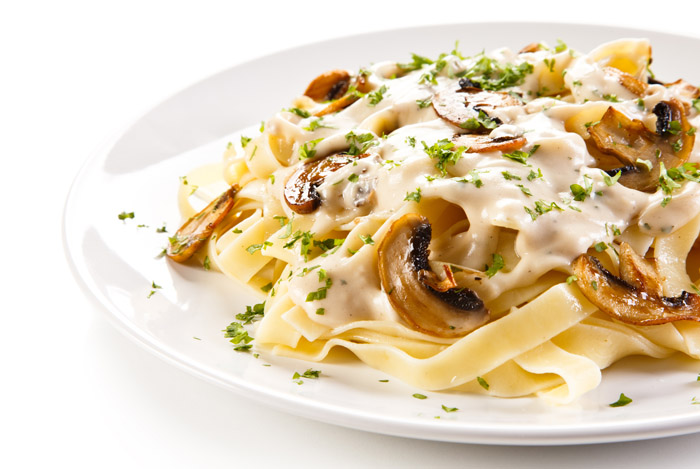 An easy way to make sure you’re ordering a healthier meal is by looking for obvious signs that what you’re about to eat is going to be bad for you.
An easy way to make sure you’re ordering a healthier meal is by looking for obvious signs that what you’re about to eat is going to be bad for you.
If the descriptors in the menu include words like creamy, breaded, crispy, stuffed, sauced, buttery, sautéed, pan-fried, or scalloped, odds are they’re loaded with hidden fats your body would be happy without.
Beware the Low Carb Options
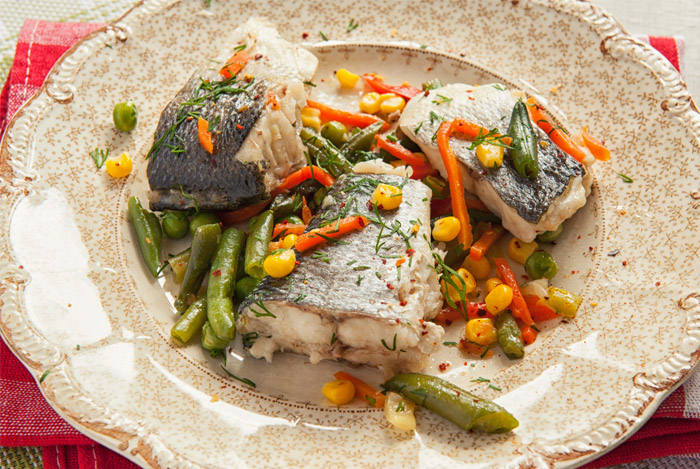 Just because a menu option declares it is low carb doesn’t necessarily mean it’s healthier for you. So many restaurants have taken up the low carb banner to insist that their food is somehow better for you, but that’s hardly the case.
Just because a menu option declares it is low carb doesn’t necessarily mean it’s healthier for you. So many restaurants have taken up the low carb banner to insist that their food is somehow better for you, but that’s hardly the case.
Low carb does not mean low calorie. Oftentimes, just because it says it’s low carb, the restaurant feels fine loading up on fats and sodium content to make up for the lack of carbs.
Low carb diets only really work best when those carbs are being replaced with nutritious foods. So if you’re ordering off a low carb menu, make sure the actual food you end up with is going to be the best option for you.
Customize Your Meal
 You don’t have to settle for the meal the way it comes. Whenever you can make substitutes, do so. If you can ask for them to not include a fatty dressing or sauce, do so.
You don’t have to settle for the meal the way it comes. Whenever you can make substitutes, do so. If you can ask for them to not include a fatty dressing or sauce, do so.
When it comes to choosing your sides, don’t just choose whatever looks like the most perfect pairing. Get a salad as a side instead. You should care more about your diet and your health than what most pleases your taste buds.
Know What Oils Your Foods Are Cooked In
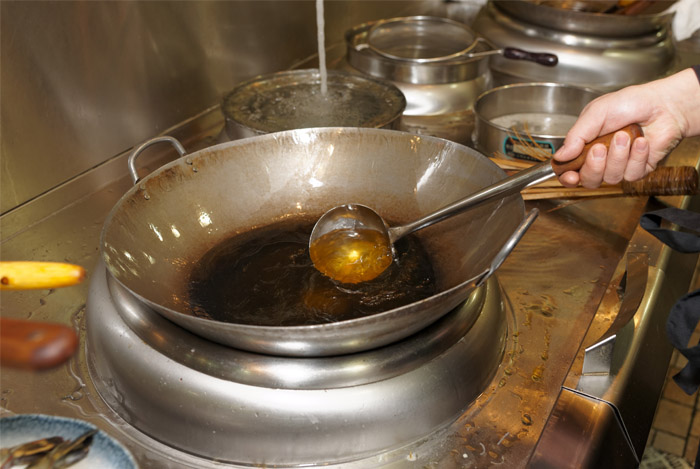 Restaurants often like to use cheaper cooking oils, like canola or vegetable oil. These oils are highly inflammatory, packed with polyunsaturated omega-6 fatty acids, so they aren’t the best option.
Restaurants often like to use cheaper cooking oils, like canola or vegetable oil. These oils are highly inflammatory, packed with polyunsaturated omega-6 fatty acids, so they aren’t the best option.
If you think your waiter can find out for you, ask about the oils used to cook your food, and ask whether or not there are alternatives available. If they have coconut oil, grass-fed butter, or even olive oil for certain foods, go for these options instead.
Be Careful With Alcoholic Beverages
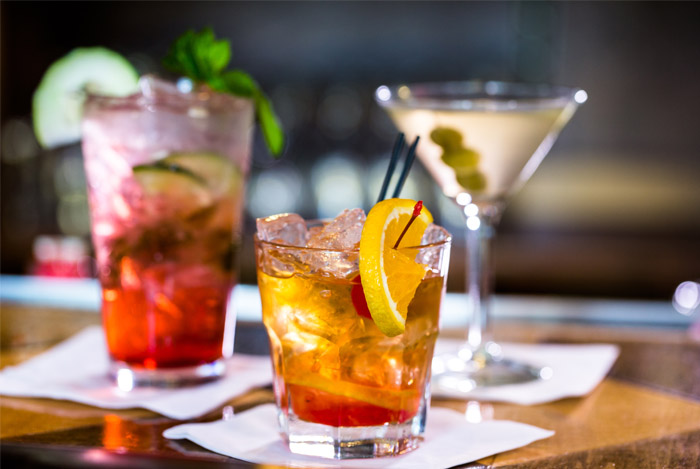 The big chain restaurants that also have bar areas really like to include a whole line of colorful and flavorful alcoholic drinks to tempt the 21 and over crowd into sampling them. And, as with all alcohol, one leads to two, leads to three, and so on.
The big chain restaurants that also have bar areas really like to include a whole line of colorful and flavorful alcoholic drinks to tempt the 21 and over crowd into sampling them. And, as with all alcohol, one leads to two, leads to three, and so on.
Margaritas, piña coladas, and drinks made with ice cream will sometimes have as many calories in them as a meal. Not only is the alcohol itself something you should watch out for while on a diet, the extra ingredients in these drinks make them altogether unnecessary.
If you intend to drink, try simple drinks, either with water or club soda, or red wines.
Ask for a To-Go Box
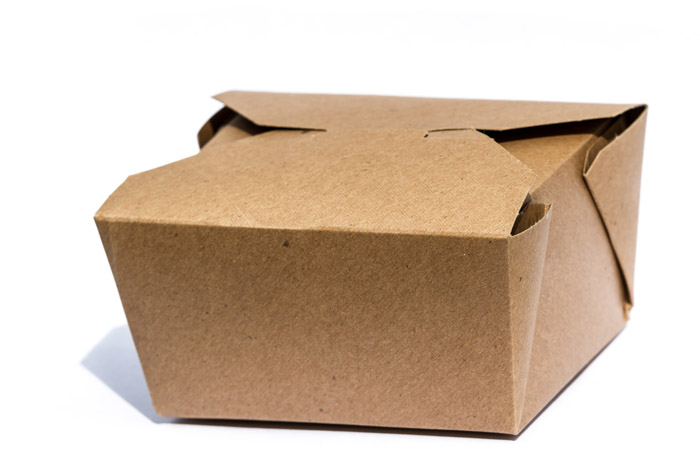 The old adage of cleaning your plate should have been thrown out a long time ago.
The old adage of cleaning your plate should have been thrown out a long time ago.
It’s just not in your best interest to always finish everything in front of you. Portion control is extremely important, especially when you eat out, as a lot of the time there’s far more than a single serving size present on your plate.
So, there are two ways of doing this. First, you could ask for the to-go box with your entrée and split up from the beginning what you intend to eat and what you want to take home and eat another time. Or, you can wait until you feel full and don’t want any more to push the rest off your plate and into the box.
The only issue with the second option is, as I mentioned before, you might not realize you’re full. That’s why I recommend the first option – plan ahead how much you want to eat. And who doesn’t like leftovers?
Say No to Dessert
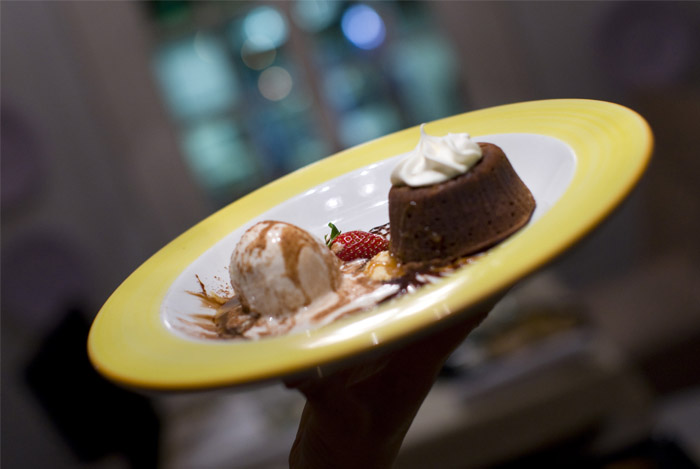 Believe it or not, to cap off a meal, you don’t need to add sugar on top!
Believe it or not, to cap off a meal, you don’t need to add sugar on top!
You probably hear it from every waiter who serves you: “Did you save room for dessert?”
Your answer should always be: “No thanks”.
Some of these desserts can contain more than a thousand calories, and you really just don’t need that on top of what you’ve already eaten.
If you make use of these tips and tricks when dining out, you’ll find you don’t feel nearly as guilty as you would otherwise. Plus, your body won’t feel as punished as it might have been from all the poor choices you could have made.
Those restaurant foods can be dangerous, even when sticking to these tips. So keep your eyes on calorie counts and sodium content if you want to stay on top of your healthy eating routine.
How do you stay healthy when eating restaurant food? Let me know in the comment section!
The post 20 Tips and Tricks to Help You Stay Healthy While Dining Out appeared first on Nutrition Secrets.
http://www.nutritionsecrets.com/healthy-while-dining-out/
No comments:
Post a Comment